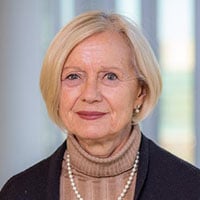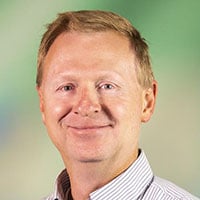What is dilated cardiomyopathy?
Mestroni: Dilated cardiomyopathy is a heart muscle disease in which the pumping function of the heart is declining. It's a disease that can potentially lead to arrhythmia, and that can lead to heart failure. In some patients, it can lead to heart transplants. The mortality rate has improved significantly in the last 10 to 20 years, as we have very good therapies to improve outcomes for our patients. It's a relatively frequent disease, affecting one in 250 people. We think that at least half of DCM patients have a genetic cause, and there are many different causes, genetically speaking. And how those genes present can be different. For example, there are certain genes that cause more severe disease in women and other genes that cause more severe disease in men.
Tell us more about the patient registry.
Mestroni: When we initially started to study DCM, we didn’t know it was caused by genetic conditions. So we started observing that there were families in which more than one person was affected. Then we started collecting that information through our registry – first in Italy and then here in the U.S. Since 1999, we have well over 2,000 patients in our active registry.
What have you learned about the genetics of DCM from the families you’ve studied?
Taylor: There are at least 20 genes for which we have very strong evidence of causing cardiomyopathy and another 20 or more for which there is some related evidence. Thus, there are at least 50 genes that have been identified with varying levels of confidence in this disease. Each of these genes has the potential to have a slightly different problem or mechanism around it.
Have you identified potential therapies?
Taylor: Because we know the genes and have our registry, we can pick a particular gene and hypothesize a targeted, or precision, therapy for it. We will be treating patients at the University of Colorado this year with gene therapies to try to correct their underlying defect, which we think is amazing. It’s something that we didn't think we were necessarily going to be doing when we started this work. There are now several gene therapy trials where we're trying to correct the genetic defect: not in the cell, not in the mouse, but actually in the patient. Right now, we have four gene therapy trials in various related diseases, where four different genes will be targeted. Starting this year, these trials are attempting to take individuals with cardiomyopathy with a particular defect and target therapy. It’s the stuff we’ve been talking about for a couple of decades or more, and the technology is finally mature enough to start.
A very simplistic analogy for gene therapy is a little bit like how Amazon comes to your front door. Amazon drivers can deliver anything in an Amazon box. For gene therapy, we’ve figured out the driver and what size box we need, so we can deliver all sorts of different cargo in that box. There are technical things that make it easier or harder to leverage. For example, it’s easier to deliver to bone marrow than it is to the liver. But the successes mean that it's not just us here in cardiology – other fields are doing similar work.
This sounds like groundbreaking news. How is gene therapy delivered?
Taylor: It is! There’s quite a bit of gene therapy happening at Children’s Hospital Colorado for pediatric conditions. But outside of the field of cancer, adult gene therapy is really pretty novel. There are several different approaches, and the approach that we're going to be using is a direct injection through an infusion. In patients with a genetic defect, the gene therapy delivers a correct and working copy of the gene to essentially fix or replace that damaged gene. In theory, once the infusions happen, we’ll be following these patients for months, years, maybe decades to see if we’ve provided them with the potential to correct the defect that might eventually one day be curative.
What are your hopes as it relates to your patients?
Taylor: This is all brand new, but the hope is that these individuals with heart failure can be identified earlier in the stage of their disease. And that disease can be slowed down or even halted, maybe ideally even reversed. We’d like to identify patients with the defect early enough in the course of their disease and give them a medicine that really targets that effect.
Is there anything else you would like others to understand about your work?
Mestroni: An important aspect of our work at the outcome study level is sharing our data with centers around the world. By putting together all our data – even if each single gene is rare – we have a large number to be able to do a predictive model. It allows us to work on risk stratification of patients to identify the ones at risk of sudden cardiac death.
Across the world, we are working together with scientists that are doing the same work. The registry and its data are a really powerful tool to give answers to patients and fundamentally none of this would be possible without the many patients who participate and support this work.
Guest contributor: Carie Behounek is a writer specializing in health and science.






